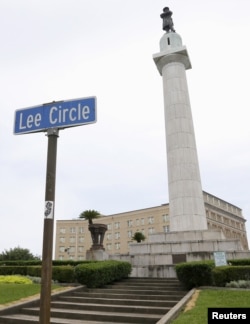New Orleans' leaders on Thursday made a sweeping move to break with the city's Confederate past when the City Council voted to remove prominent monuments commemorating the pro-slavery South along some of its busiest streets.
The council's 6-1 vote allows the city to remove four monuments, including a towering statue of Confederate General Robert E. Lee that has stood at the center of a traffic circle for 131 years.
It was an emotional meeting — often interrupted by heckling — infused with references to slavery, lynchings and racism, as well as the pleas of those who opposed removing the monuments to not "rewrite history.''
City Council President Jason Williams called the vote a symbolic severing of an "umbilical cord'' tying the city to the offensive legacy of racial hatred.
"If anybody wins here, it will be the South, because it is finally rising,'' said Williams, who is black.
Stacy Head, an at-large council member, was the lone vote against the removal. She is one of two white council members.
She lamented what she called a rush to take the monuments down without adequate consideration of their historic value and meaning to many in New Orleans.
Fixing historic injustice is "a lot harder work than removing monuments,'' she said, even as many in the packed council chambers jeered her.
She said the issue was dividing the city, not uniting it. "I think all we will be left with is pain and division,'' Head said.
The decision came after months of impassioned debate. Now, the city faces possible lawsuits seeking to keep the monuments where they are.
Mayor Mitch Landrieu first proposed taking down the monuments after police said a white supremacist killed nine blacks inside the Emanuel AME Church in Charleston, South Carolina, in June.
Anti-Confederate sentiment has grown since then around the country, along with protests against police mistreatment, as embodied by the Black Lives Matter movement.
Before Thursday's vote, Landrieu told the council and residents who gathered on both sides of the issue that for New Orleans to move forward, "we must reckon with our past.''
Landrieu said the monuments reinforce the Confederate ideology of slavery, limit city progress and divide the city. He used President Abraham Lincoln's famous quote: "A house divided against itself cannot stand.''
The most imposing of the monuments the council has voted to strike from the cityscape has had a commanding position over St. Charles Avenue since 1884: The 16-foot-tall (5 meters) bronze statue of Lee stands atop a 60-foot-high (18 meters) Doric marble column, which itself rises over granite slabs on an earthen mound. Four sets of stone staircases, aligned with the major compass points, ascend the mound.









